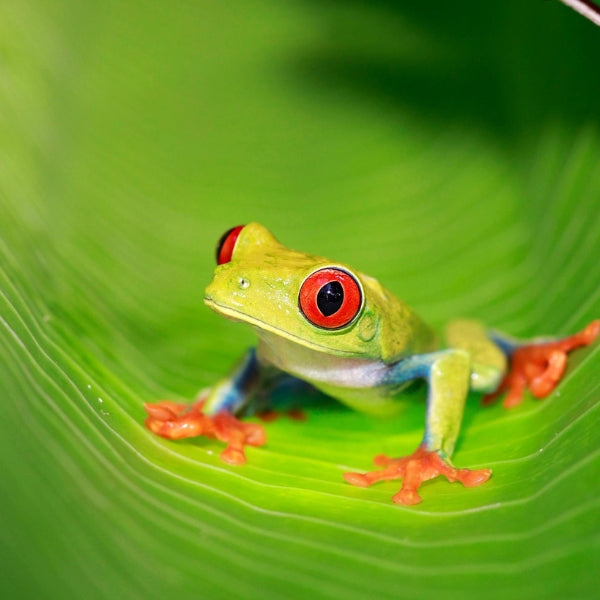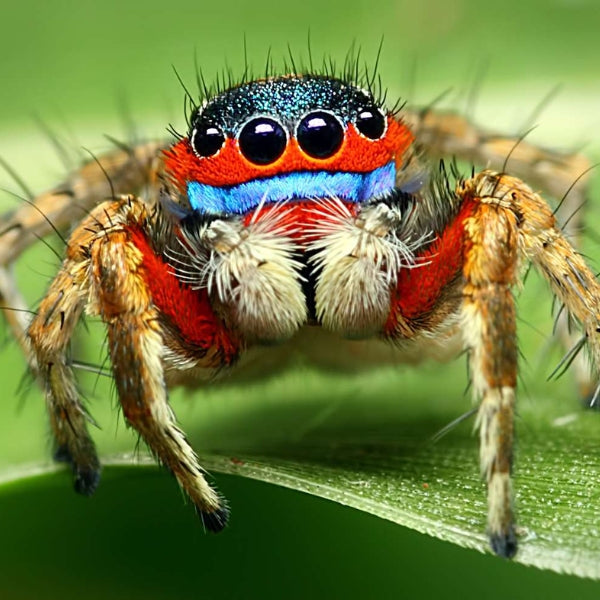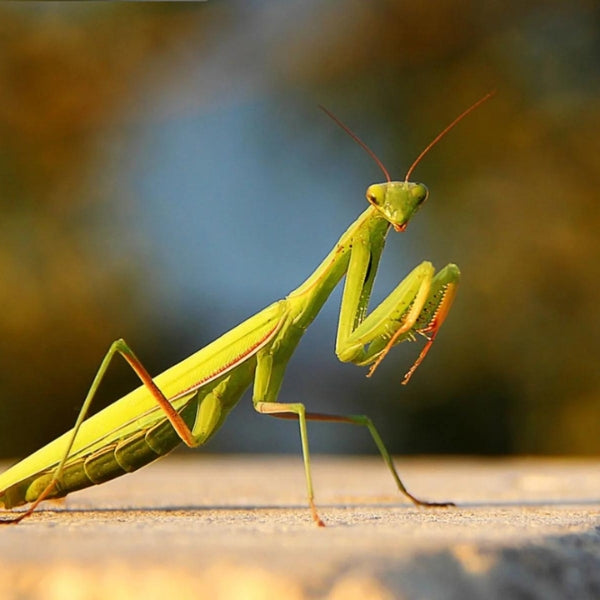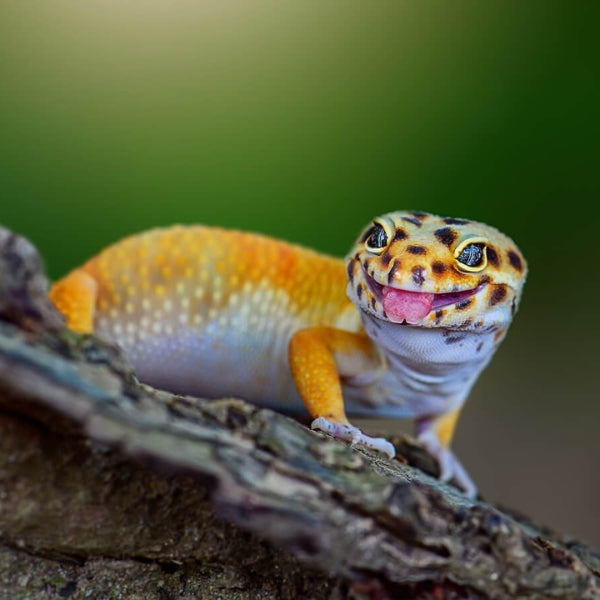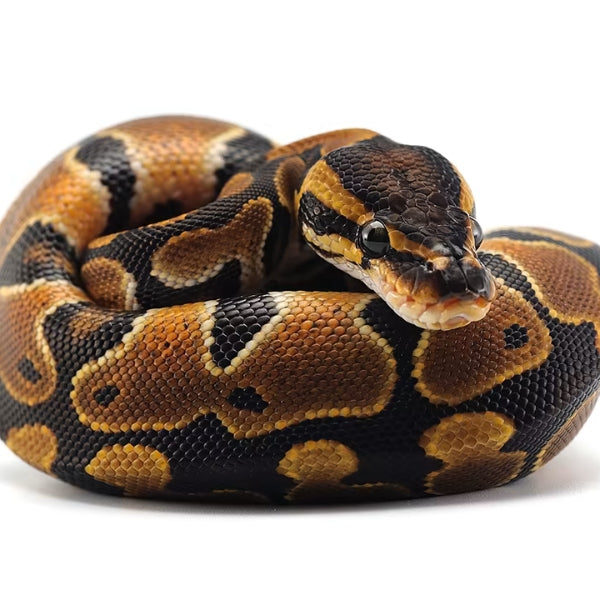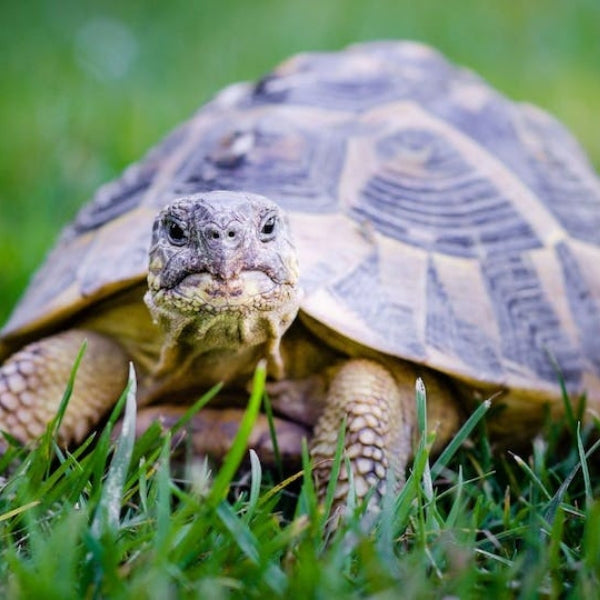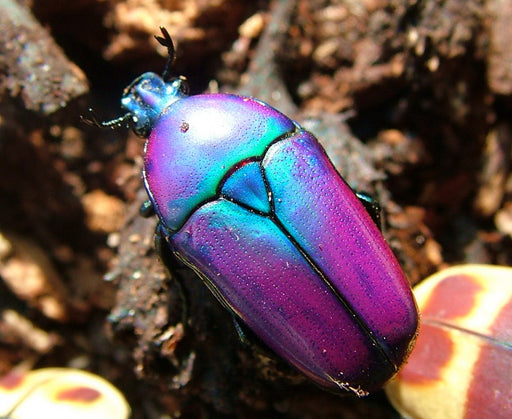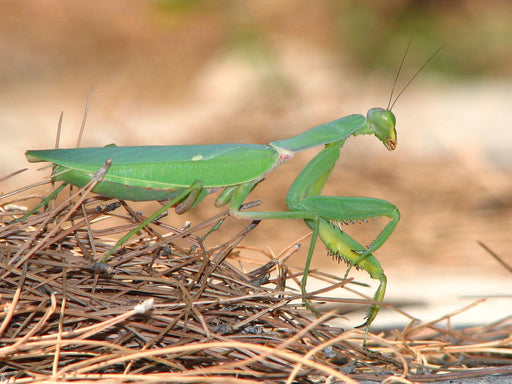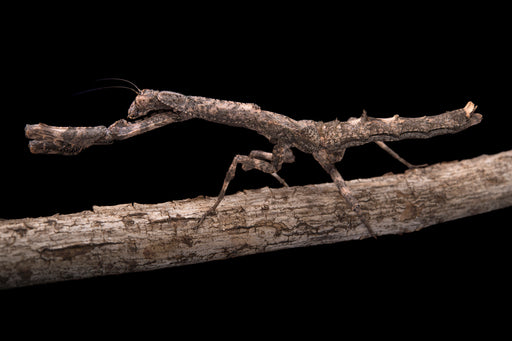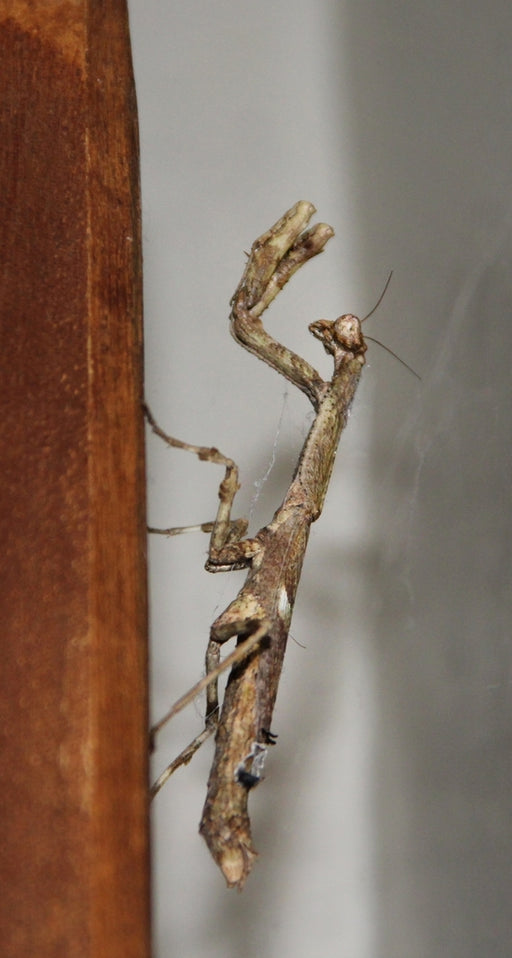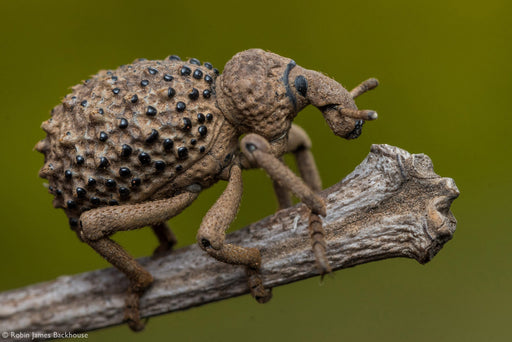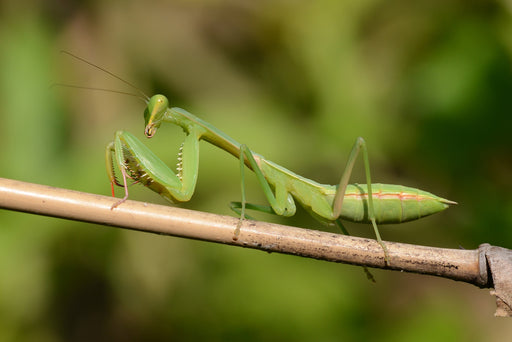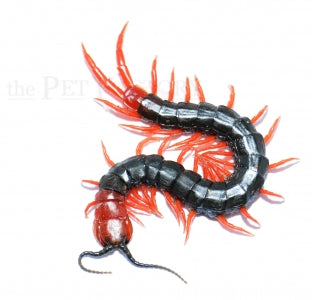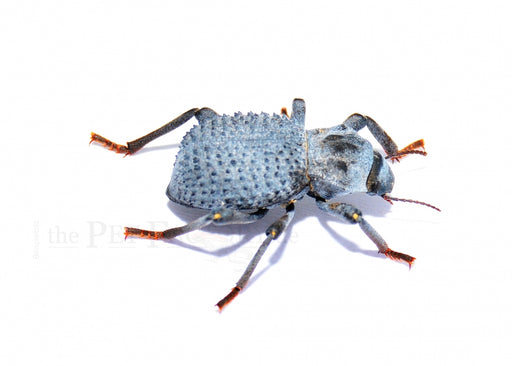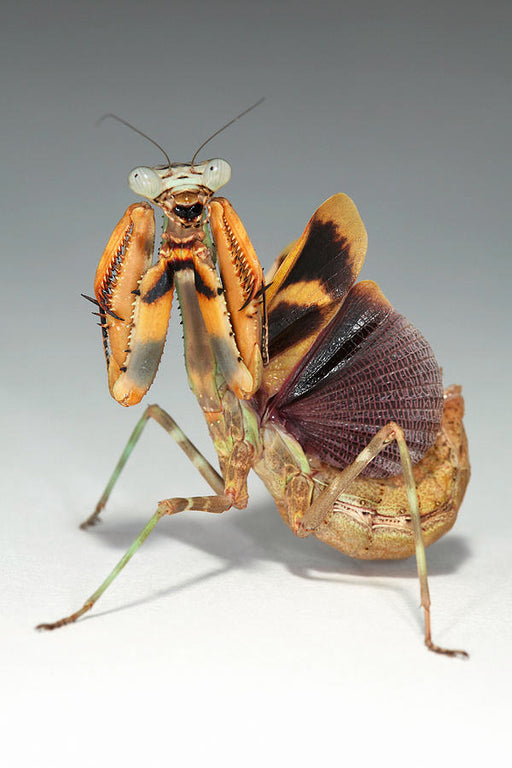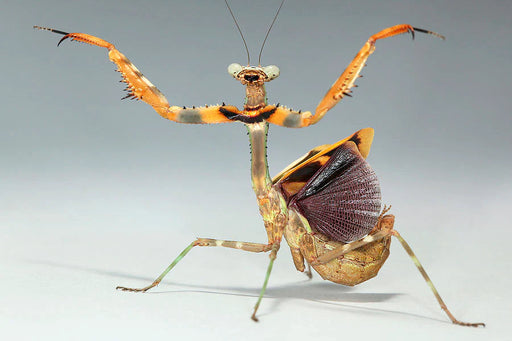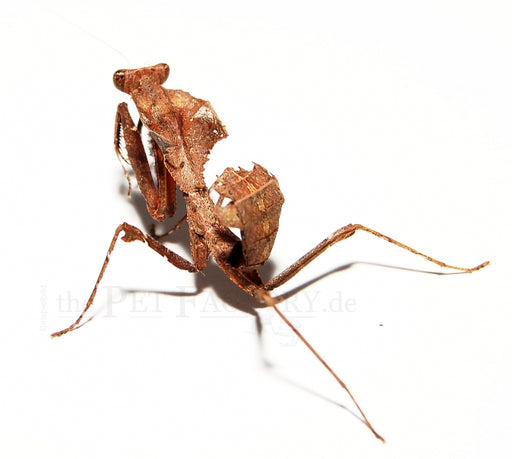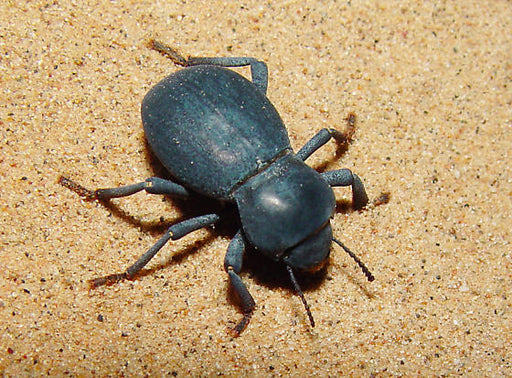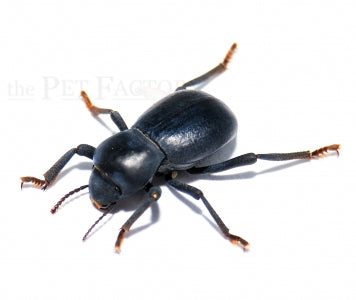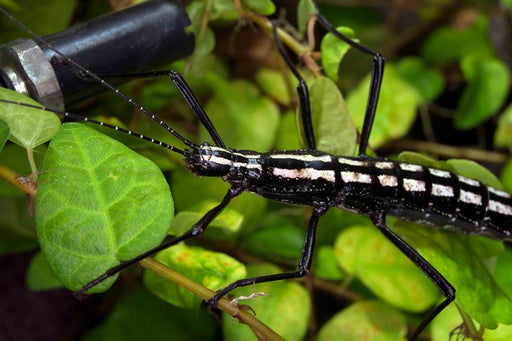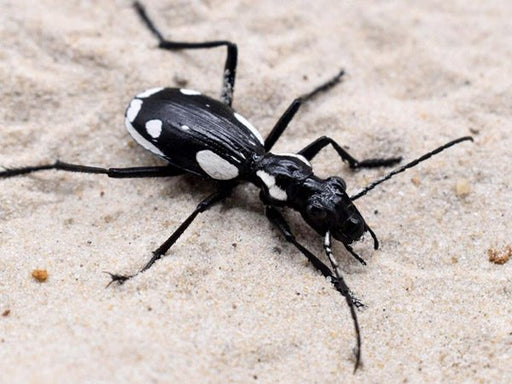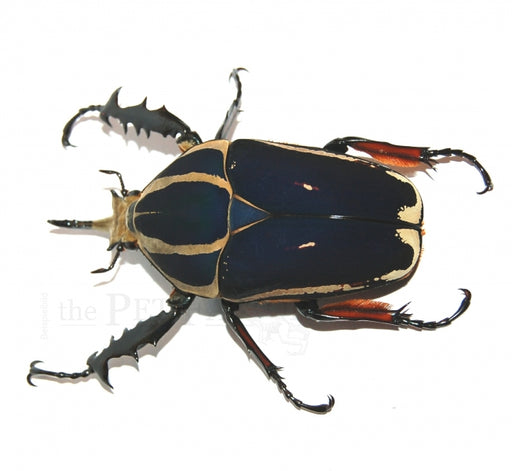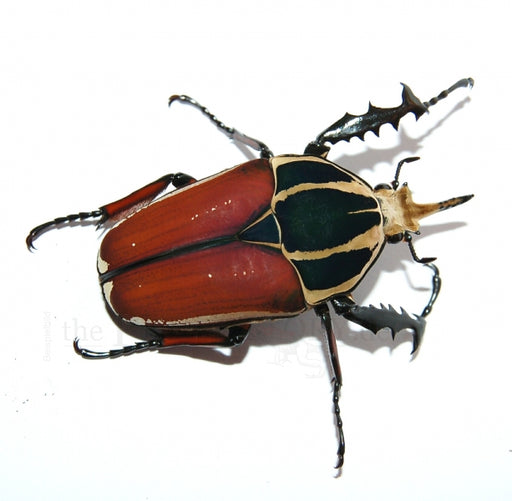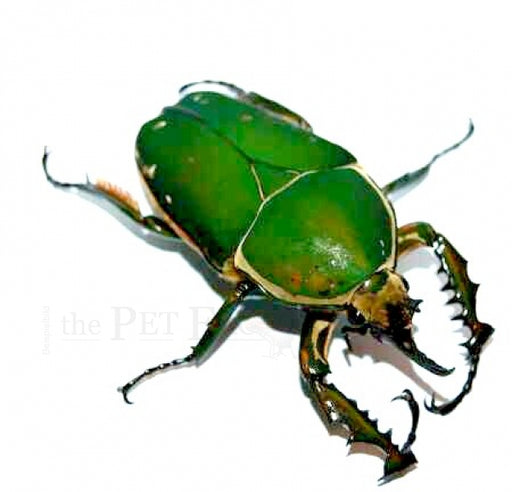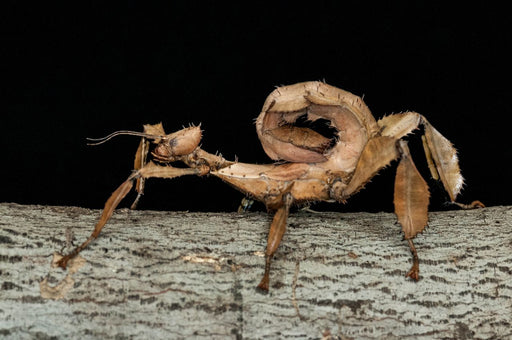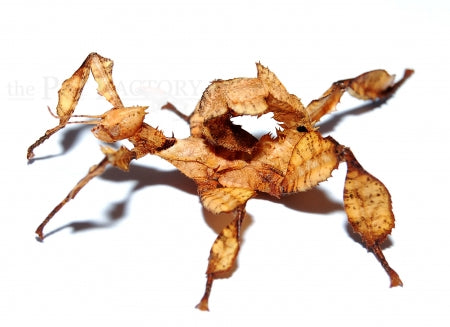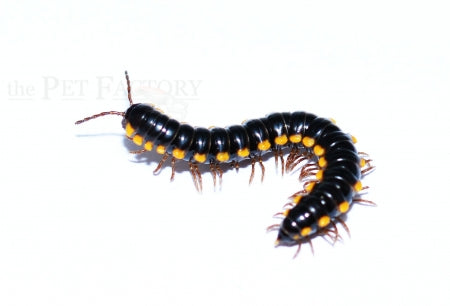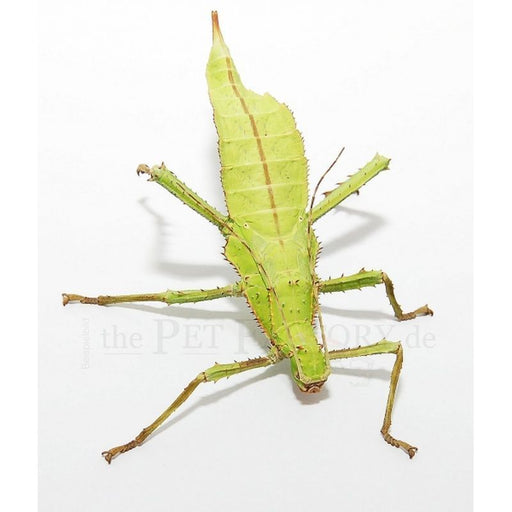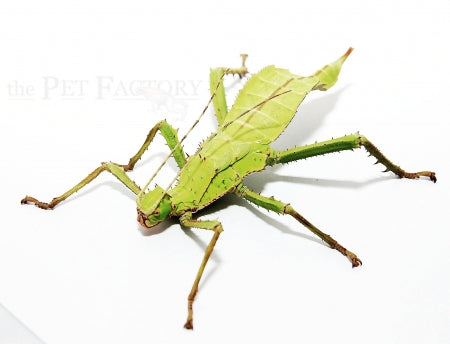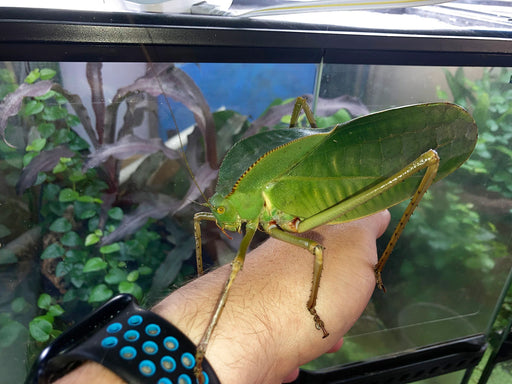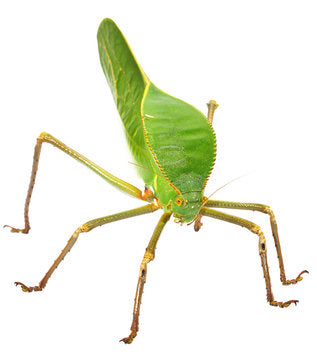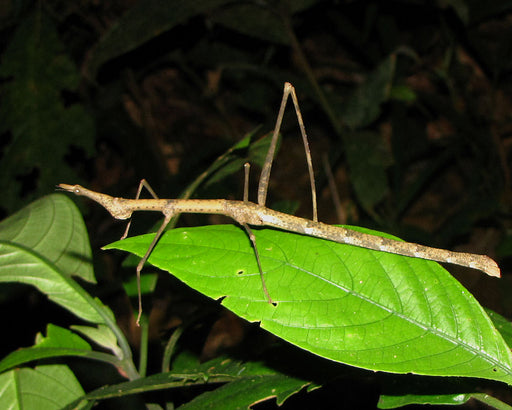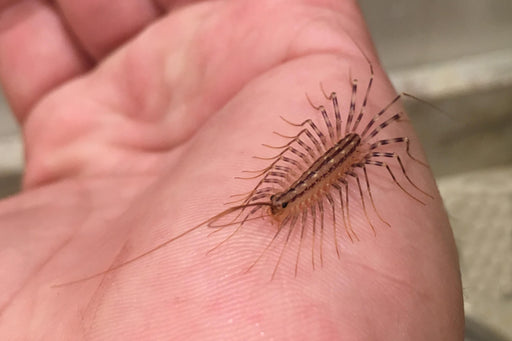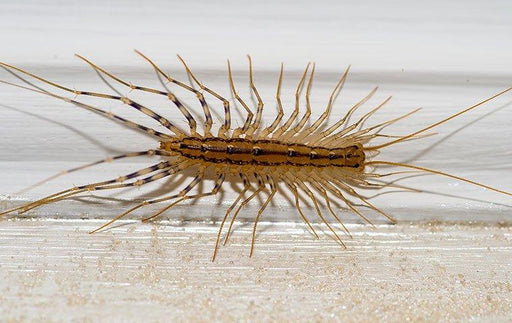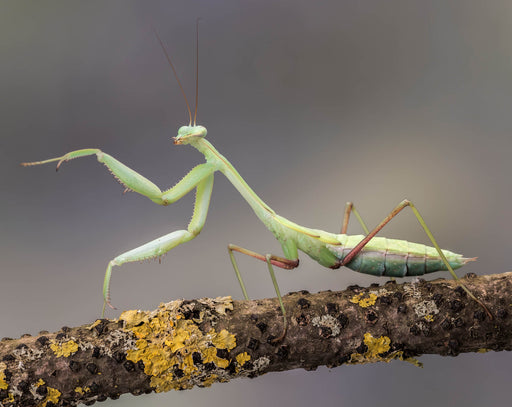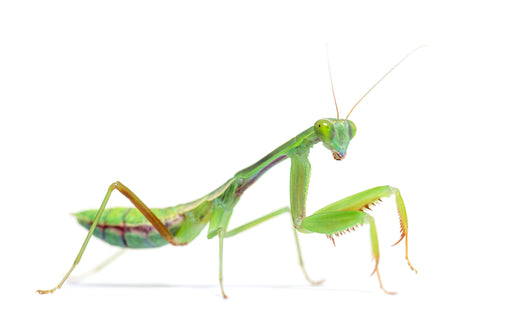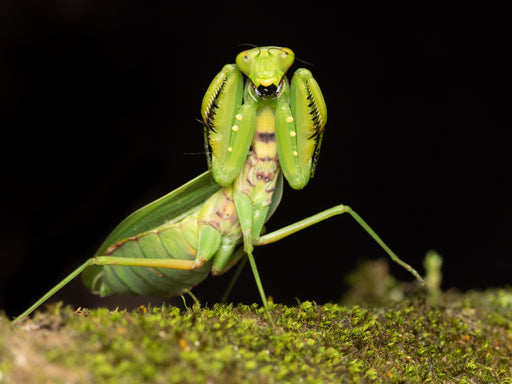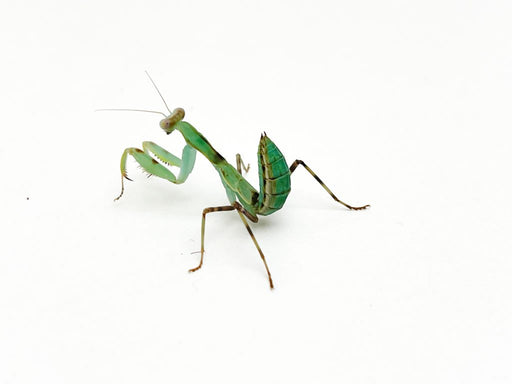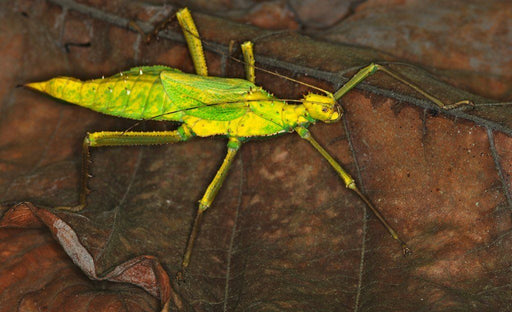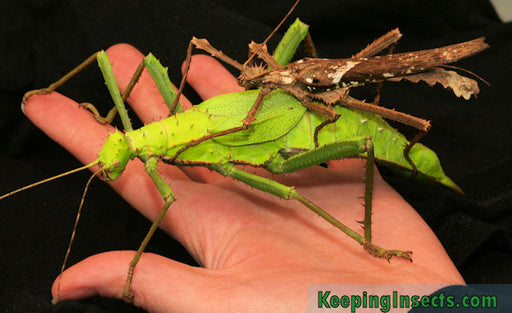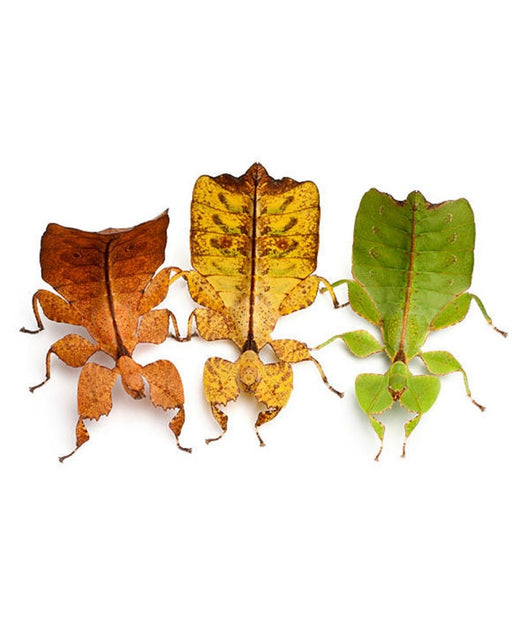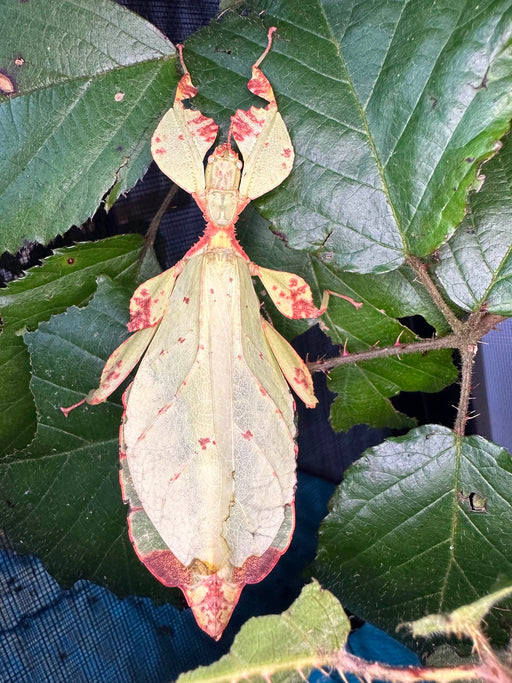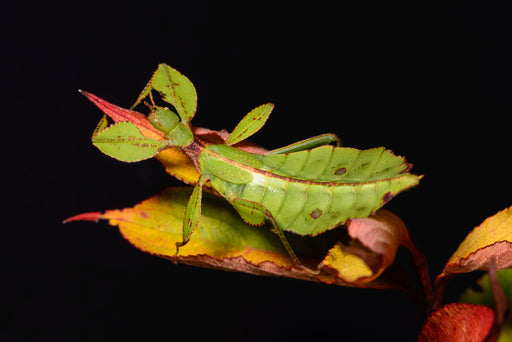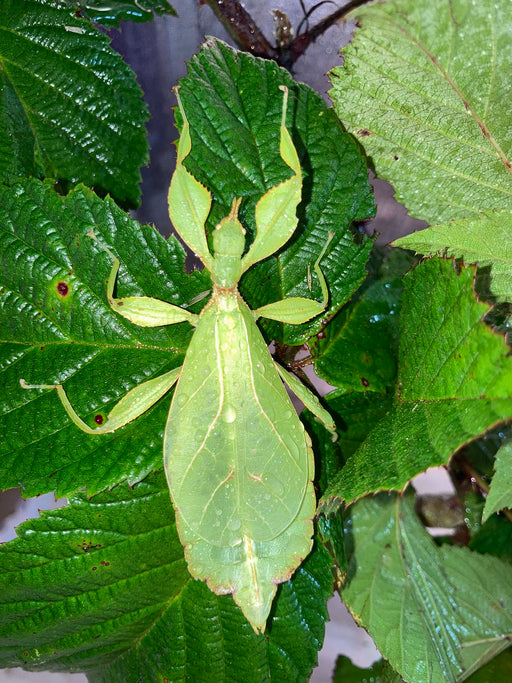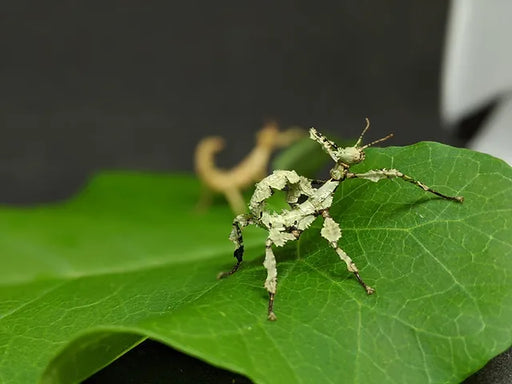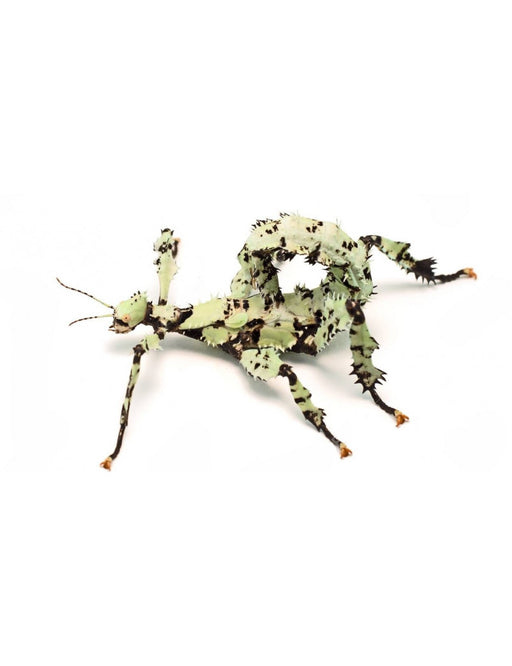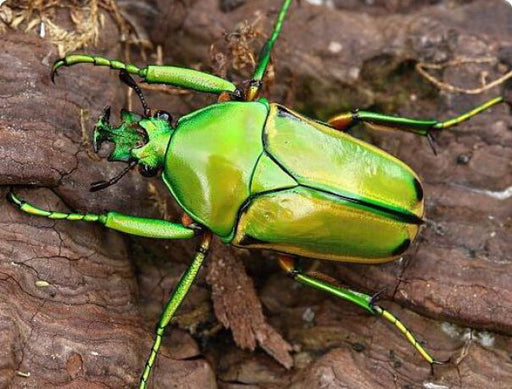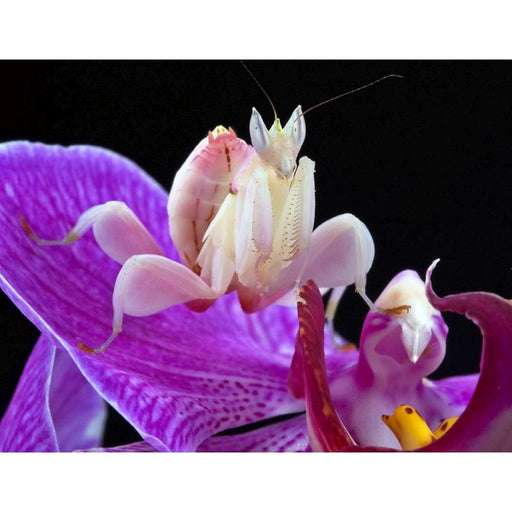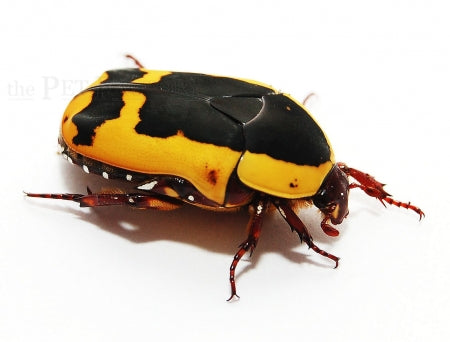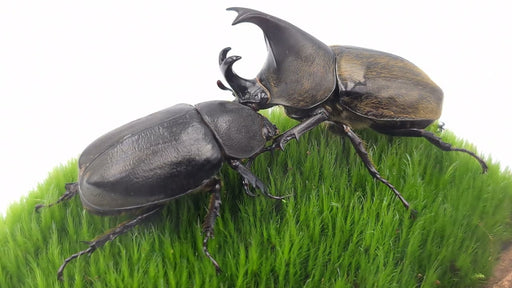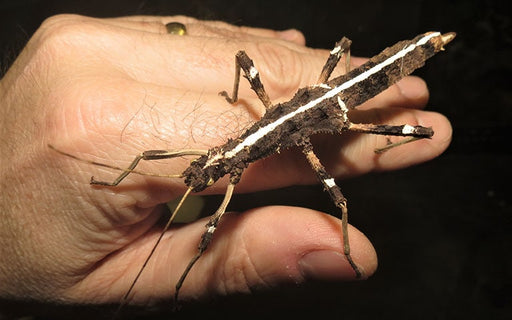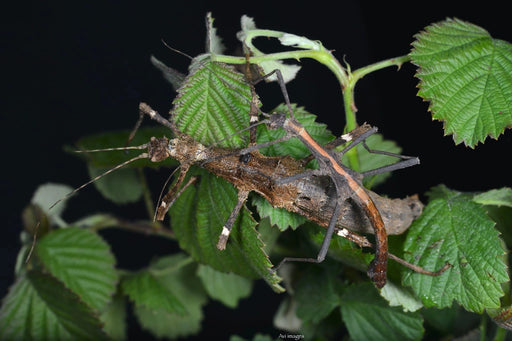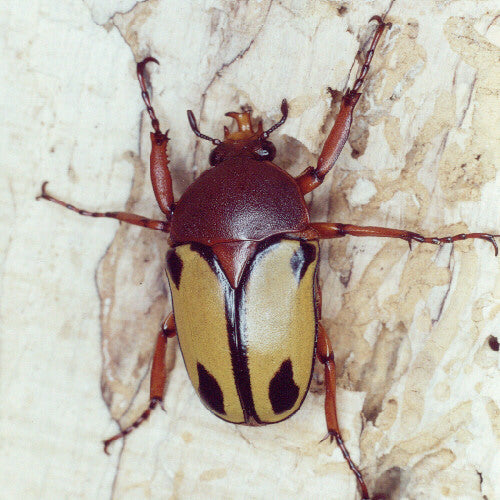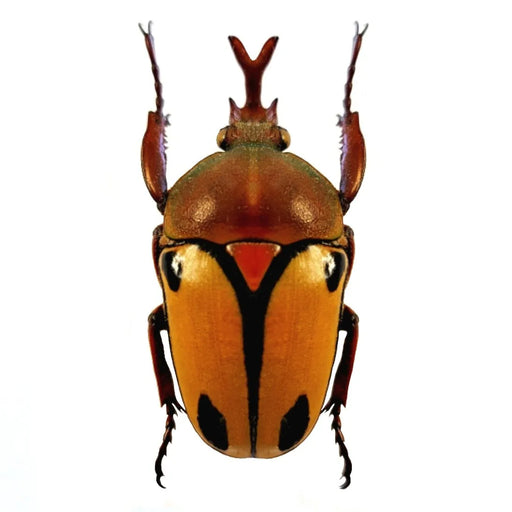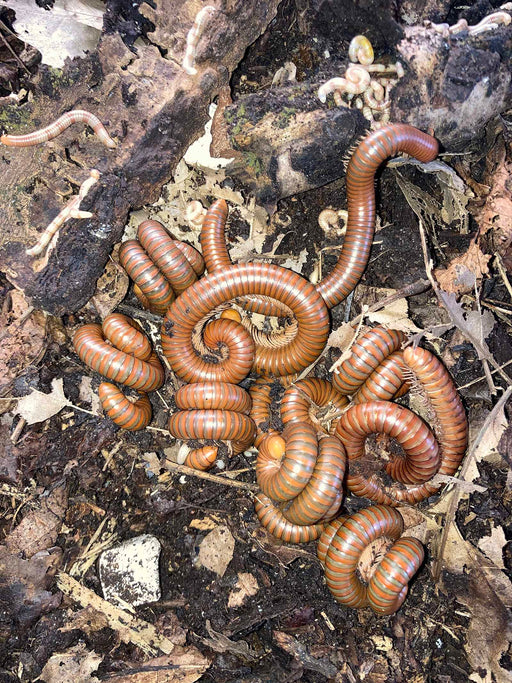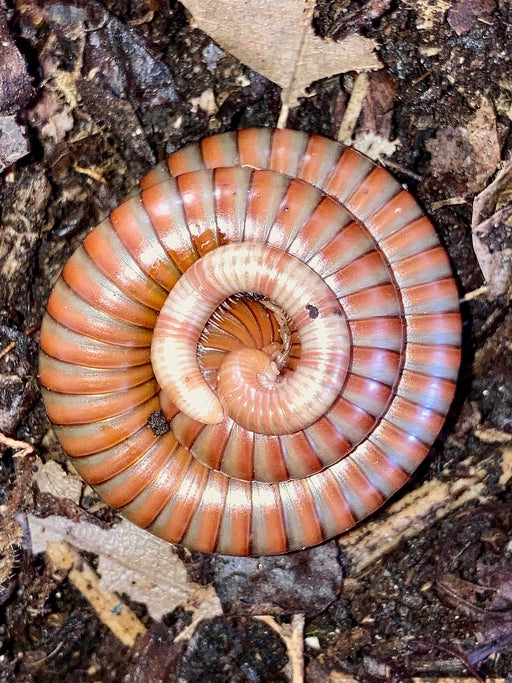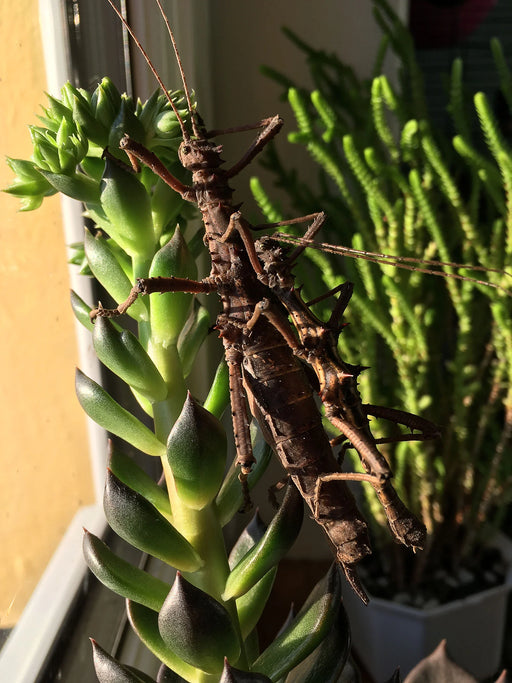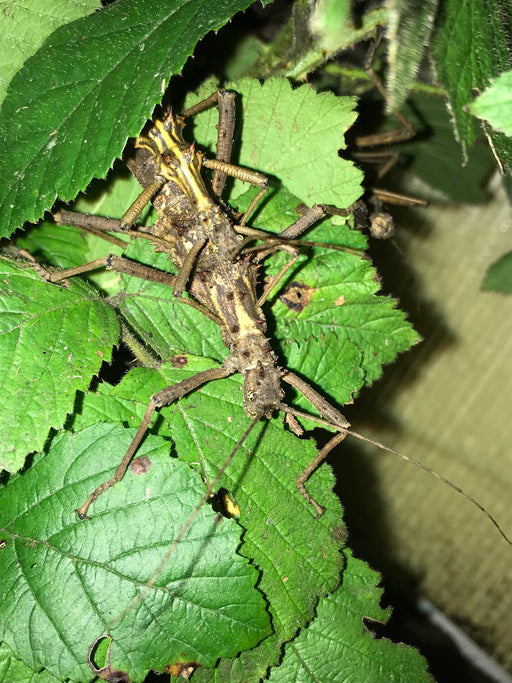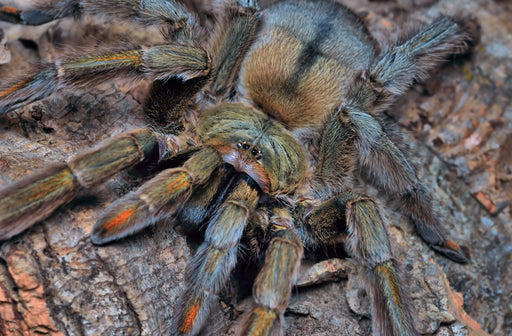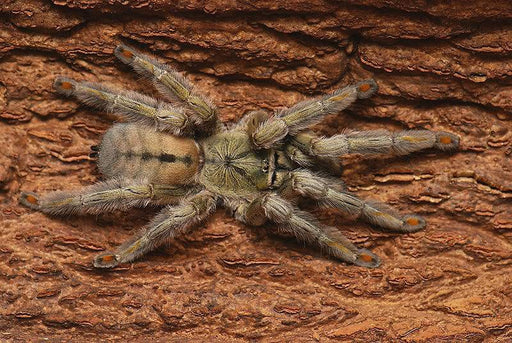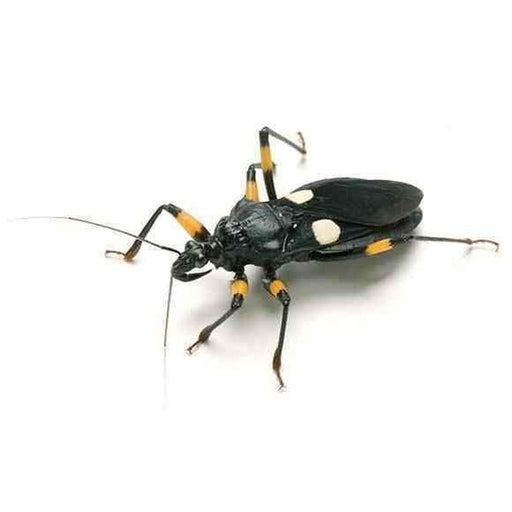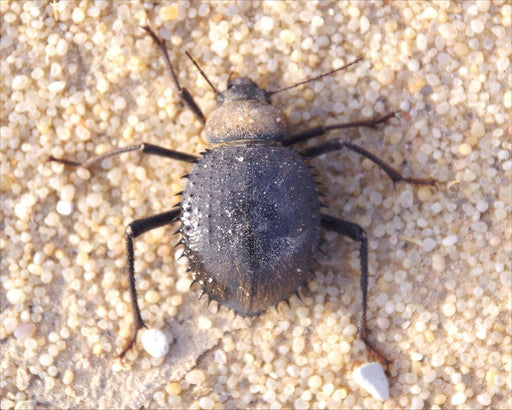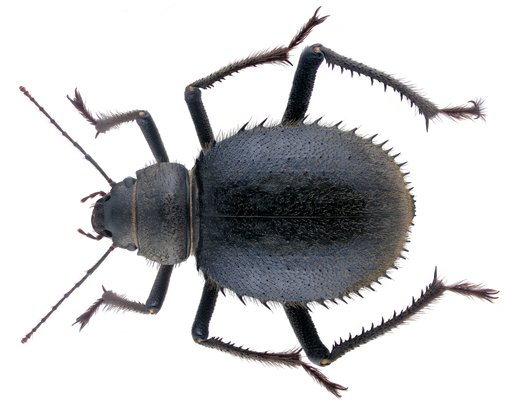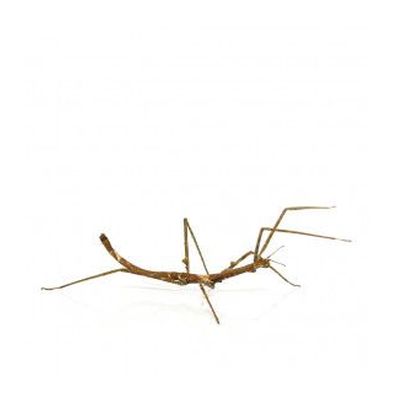Invertebrates
Buy Invertebrates Online or In Store at Newlands Reptile Centre
We are your one stop shop for Invertebrates. We stock a wide range of species. We have everything from Mantids, Scorpions, millipedes, centipedes to beetles. Shop with confidence. Visit our reptile showroom. Get expert advice on how to care for your pets.-
Original price €0.00 - Original price €0.00Original price €0.00€29.99€29.99 - €29.99Current price €29.99| /
African Jewel Beetle (Chlorocala africana oertzeni)
Out of stockPrice includes 3 specimens total (larvae, pupae, beetles or a mix) African Jewel Beetles African Jewel Beetles, known for their stunning iridescent...
View full detailsOriginal price €0.00 - Original price €0.00Original price €0.00€29.99€29.99 - €29.99Current price €29.99| /Sold out -
Original price €0.00 - Original price €0.00Original price €0.00€23.99€23.99 - €23.99Current price €23.99| /
African Praying Mantis | Sphodromantis Lineola
Out of stockThe African Praying Mantis, scientifically known as Sphodromantis lineola, is a fascinating and captivating insect species often kept as a pet due ...
View full detailsOriginal price €0.00 - Original price €0.00Original price €0.00€23.99€23.99 - €23.99Current price €23.99| /Sold out -
Original price €0.00 - Original price €0.00Original price €0.00€29.99€29.99 - €29.99Current price €29.99| /
African Twig Mantis
Out of stockThe African Twig Mantis, scientifically known as Popa spurca, is a captivating and unique species of praying mantis. It is known for its remarkable...
View full detailsOriginal price €0.00 - Original price €0.00Original price €0.00€29.99€29.99 - €29.99Current price €29.99| /Sold out -
Original price €0.00 - Original price €0.00Original price €0.00€29.99€29.99 - €29.99Current price €29.99| /
Armoured lily weevil | Brachycerus sp
Only 2 left!The Armoured Lily Weevil, known scientifically as Brachycerus sp., is a unique and fascinating insect. Belonging to the weevil family, ...
View full detailsOriginal price €0.00 - Original price €0.00Original price €0.00€29.99€29.99 - €29.99Current price €29.99| / -
Original price €0.00 - Original price €0.00Original price €0.00€24.99€24.99 - €24.99Current price €24.99| /
Asian Mantis
Out of stockHousing:Giant Asian mantis do well with a glass terrarium as their enclosure. This is because glass is great at allowing heat to escape ensuring th...
View full detailsOriginal price €0.00 - Original price €0.00Original price €0.00€24.99€24.99 - €24.99Current price €24.99| /Sold out -
Original price €89.99 - Original price €89.99Original price€89.99€89.99 - €89.99Current price €89.99| /
Black Cherry Centipede - Scolopendra sp. Black Cherry
Out of stockThe Black Cherry Centipede, also known as Scolopendra subspinipes mutilans, is a fascinating and unique arthropod. It has a striking appea...
View full detailsOriginal price €89.99 - Original price €89.99Original price€89.99€89.99 - €89.99Current price €89.99| /Sold out -
Original price €0.00 - Original price €0.00Original price €0.00€59.99€59.99 - €59.99Current price €59.99| /
Blue Death Frightening Beetle | Asbolus Verrucosus
Out of stockTo defend themselves, other beetles spray secretions from a gland. Asbolus verrucosus cannot do this and they cannot fly away to escape their attac...
View full detailsOriginal price €0.00 - Original price €0.00Original price €0.00€59.99€59.99 - €59.99Current price €59.99| /Sold out -
Original price €0.00 - Original price €0.00Original price €0.00€29.99€29.99 - €29.99Current price €29.99| /
Budwing Mantis
Out of stockThe Budwing Mantis, scientifically known as Parasphendale affinis, is a captivating and alluring insect species popular among entomology enthusiast...
View full detailsOriginal price €0.00 - Original price €0.00Original price €0.00€29.99€29.99 - €29.99Current price €29.99| /Sold out -
Original price €0.00 - Original price €0.00Original price €0.00€18.99€18.99 - €18.99Current price €18.99| /
Dead Leaf Mantis | Deroplatys Desiccata
Only 1 left!Like many mantids, the dead leaf remains mostly motionless, which is beneficial for its camouflage. The "dead leaf" waits camouflaged in its habita...
View full detailsOriginal price €0.00 - Original price €0.00Original price €0.00€18.99€18.99 - €18.99Current price €18.99| / -
Original price €0.00 - Original price €0.00Original price €0.00€49.99€49.99 - €49.99Current price €49.99| /
Death Feigning Beetle | Asbolus laevis
Out of stockAsbolus laevis DEATH Feigning BEETLE is a fascinating and intriguing arthropod species known for its striking appearance and captivating behavior. ...
View full detailsOriginal price €0.00 - Original price €0.00Original price €0.00€49.99€49.99 - €49.99Current price €49.99| /Sold out -
Original price €0.00 - Original price €0.00Original price €0.00€3.99€3.99 - €3.99Current price €3.99| /
Devil Rider Stick Insect (Anisomorpha bup. "Ocala")
Out of stockThe Devil Rider, scientifically known as Anisomorpha buprestoides "Ocala," is a fascinating and visually striking species of stick insect native to...
View full detailsOriginal price €0.00 - Original price €0.00Original price €0.00€3.99€3.99 - €3.99Current price €3.99| /Sold out -
Original price €0.00 - Original price €0.00Original price €0.00€29.99€29.99 - €29.99Current price €29.99| /
Egyptian Predator Beetle | Anthia sexmaculata
Only 1 left!The Egyptian Predator Beetle, Anthia sexmaculata, is an intriguing species of ground beetle known for its distinctive appearance and predatory habi...
View full detailsOriginal price €0.00 - Original price €0.00Original price €0.00€29.99€29.99 - €29.99Current price €29.99| / -
Original price €0.00 - Original price €0.00Original price €0.00€25.99€25.99 - €25.99Current price €25.99| /
Flower Beetle Female Larvae | Mecynorrhina torquata ugandensis
Out of stockThe Flower Beetle Female, scientifically known as Mecynorrhina torquata ugandensis, is a magnificent insect species prized by entomologists and e...
View full detailsOriginal price €0.00 - Original price €0.00Original price €0.00€25.99€25.99 - €25.99Current price €25.99| /Sold out -
Original price €0.00 - Original price €0.00Original price €0.00€21.99€21.99 - €21.99Current price €21.99| /
Flower Beetle Male Larvae | Mecynorrhina torquata immaculicollis
Out of stockThis male larval stage Flower Beetle, scientifically known as Mecynorrhina torquata immaculicollis, is a stunning and charismatic insect that hails...
View full detailsOriginal price €0.00 - Original price €0.00Original price €0.00€21.99€21.99 - €21.99Current price €21.99| /Sold out -
Original price €0.00 - Original price €0.00Original price €0.00€7.99€7.99 - €7.99Current price €7.99| /
Giant Prickly Stick Insect | Extatosoma tiaratum
Out of stockThe Giant Prickly Stick Insect, scientifically known as Extatosoma tiaratum, is a remarkable insect species renowned for its striking appearance an...
View full detailsOriginal price €0.00 - Original price €0.00Original price €0.00€7.99€7.99 - €7.99Current price €7.99| /Sold out -
Original price €0.00 - Original price €0.00Original price €0.00€15.99€15.99 - €15.99Current price €15.99| /
Golden Edge Millipede | Coromus spec
Out of stockThe Golden Edge Millipede, scientifically known as Coromus spec, is an intriguing and unique arthropod species that belongs to the millipede family...
View full detailsOriginal price €0.00 - Original price €0.00Original price €0.00€15.99€15.99 - €15.99Current price €15.99| /Sold out -
Original price €0.50 - Original price €0.50Original price €0.50€21.99€21.99 - €21.99Current price €21.99| /
Heteropteryx dilatata Stick Insect
Out of stockGiant Malayan Stick Insect Very nice, quiet species in light green. It is easy to hold and ideal for beginners. Please note! We don't ship al...
View full detailsOriginal price €0.50 - Original price €0.50Original price €0.50€21.99€21.99 - €21.99Current price €21.99| /Sold out -
Original price €0.00 - Original price €0.00Original price €0.00€34.99€34.99 - €34.99Current price €34.99| /
Hooded Katydid (Siliquofera grandis)
Only 2 left!The Hooded Katydid (Siliquofera grandis) is a fascinating insect known for its striking appearance and unique behaviors. This species o...
View full detailsOriginal price €0.00 - Original price €0.00Original price €0.00€34.99€34.99 - €34.99Current price €34.99| / -
Original price €0.00 - Original price €0.00Original price €0.00€15.99€15.99 - €15.99Current price €15.99| /
Horse Head Grasshopper
Out of stockThe Horse Head Grasshopper, also known by its scientific name Pseudoproscopia scabra, is a remarkable and visually striking species of grasshopper ...
View full detailsOriginal price €0.00 - Original price €0.00Original price €0.00€15.99€15.99 - €15.99Current price €15.99| /Sold out -
Original price €0.00 - Original price €0.00Original price €0.00€44.99€44.99 - €44.99Current price €44.99| /
House Centipede | Scutigera coleoptrata
Only 1 left!The House Centipede, scientifically known as Scutigera coleoptrata, is a fascinating and beneficial arthropod found in many households worldwide. D...
View full detailsOriginal price €0.00 - Original price €0.00Original price €0.00€44.99€44.99 - €44.99Current price €44.99| / -
Original price €0.00 - Original price €0.00Original price €0.00€15.99€15.99 - €15.99Current price €15.99| /
Indian giant mantis | Hierodula membranacea
Out of stockThe Indian Giant Mantis, Hierodula membranacea, is a large and impressive species of praying mantis known for its size and striking appearance. Thi...
View full detailsOriginal price €0.00 - Original price €0.00Original price €0.00€15.99€15.99 - €15.99Current price €15.99| /Sold out -
Original price €24.99 - Original price €24.99Original price€24.99€24.99 - €24.99Current price €24.99| /
Indo China Mantis - Captive Bred
Only 1 left!The Indo China Mantis is a fascinating and unique species of praying mantis. They are known for their distinctive coloring, with shades of green an...
View full detailsOriginal price €24.99 - Original price €24.99Original price€24.99€24.99 - €24.99Current price €24.99| / -
Original price €0.00 - Original price €0.00Original price €0.00€48.99€48.99 - €48.99Current price €48.99| /
Jungle Nymph Pair - Captive Bred
Out of stockThe Jungle Nymph is a stunning insect species that originates from Southeast Asia. These insects are commonly kept as pets due to their uniqu...
View full detailsOriginal price €0.00 - Original price €0.00Original price €0.00€48.99€48.99 - €48.99Current price €48.99| /Sold out -
Original price €0.00 - Original price €0.00Original price €0.00€9.99€9.99 - €9.99Current price €9.99| /
Leaf Insect (Phyllium letiranti “Tataba”)
Out of stockThe Leaf Insect, scientifically known as Phyllium letiranti “Tataba,” is a remarkable creature often mistaken for a leaf due to its incredible mimi...
View full detailsOriginal price €0.00 - Original price €0.00Original price €0.00€9.99€9.99 - €9.99Current price €9.99| /Sold out -
Original price €0.00 - Original price €0.00Original price €0.00€9.99€9.99 - €9.99Current price €9.99| /
Leaf Insect (Phyllium phillippinicum)
Out of stockThe Leaf Insect, scientifically known as Phyllium phillippinicum, is a remarkable creature that belongs to the order Phasmatodea, commonly known as...
View full detailsOriginal price €0.00 - Original price €0.00Original price €0.00€9.99€9.99 - €9.99Current price €9.99| /Sold out -
Original price €0.00 - Original price €0.00Original price €0.00€34.99€34.99 - €34.99Current price €34.99| /
Macleays Spectre Lichen Stick Insect | Extatosoma tiaratum Lichen
Out of stockThe Lichen Stick Insect, a variety of Extatosoma tiaratum, is an intriguing and visually fascinating species of phasmid, commonly known as stick in...
View full detailsOriginal price €0.00 - Original price €0.00Original price €0.00€34.99€34.99 - €34.99Current price €34.99| /Sold out -
Original price €0.00 - Original price €0.00Original price €0.00€29.99€29.99 - €29.99Current price €29.99| /
Metallic Green Flower Beetle | Coelorrhina aurata
Only 2 left!Price includes 3 specimens total (larvae, pupae, beetles or a mix) The Metallic Green Flower Beetle, Coelorrhina aurata, is a captivating insect sp...
View full detailsOriginal price €0.00 - Original price €0.00Original price €0.00€29.99€29.99 - €29.99Current price €29.99| / -
Original price €0.00 - Original price €0.00Original price €0.00€50.99€50.99 - €50.99Current price €50.99| /
Orchid Mantis | Hymenopus coronatus
Only 1 left!Orchid Mantis, or Hymenopus coronatus, is a beautiful pink and white mantis with lobes on its legs that look like flower pentals. Although this spe...
View full detailsOriginal price €0.00 - Original price €0.00Original price €0.00€50.99€50.99 - €50.99Current price €50.99| / -
Original price €0.00 - Original price €0.00Original price €0.00€10.99€10.99 - €10.99Current price €10.99| /
Pachnoda Beetle | Pachnoda flaviventris
Out of stockThe Pachnoda Beetle, scientifically known as Pachnoda flaviventris, is a fascinating and colorful insect species that is popular among entomology e...
View full detailsOriginal price €0.00 - Original price €0.00Original price €0.00€10.99€10.99 - €10.99Current price €10.99| /Sold out -
Original price €0.00 - Original price €0.00Original price €0.00€21.99€21.99 - €21.99Current price €21.99| /
Rhinoceros Beetle | Xylotrupes pubescens
Out of stockThe Rhinoceros Beetle, scientifically known as Xylotrupes pubescens, is a fascinating insect characterized by its imposing size and unique appearan...
View full detailsOriginal price €0.00 - Original price €0.00Original price €0.00€21.99€21.99 - €21.99Current price €21.99| /Sold out -
Original price €0.00 - Original price €0.00Original price €0.00€4.99€4.99 - €4.99Current price €4.99| /
Sunny Stick Insect (Sungaya inexpectata)
Only 3 left!5.0 / 5.0
1 Review
The Sunny Stick Insect (Sungaya inexpectata) is a fascinating insect species known for its striking appearance and intriguing behaviors. These stic...
View full detailsOriginal price €0.00 - Original price €0.00Original price €0.00€4.99€4.99 - €4.99Current price €4.99| / -
Original price €0.00 - Original price €0.00Original price €0.00€32.99€32.99 - €32.99Current price €32.99| /
Tanzanian Flower Beetle | Eudicella trilineata
Out of stockThe Tanzanian Flower Beetle, Eudicella trilineata, is a striking beetle species known for its vibrant appearance and affinity for flowers. Native t...
View full detailsOriginal price €0.00 - Original price €0.00Original price €0.00€32.99€32.99 - €32.99Current price €32.99| /Sold out -
Original price €0.00 - Original price €0.00Original price €0.00€15.99€15.99 - €15.99Current price €15.99| /
Tanzanian Millipede | Spirostreptus spec. 1 “Tansania”
Out of stockThe Tanzanian Millipede, scientifically known as Spirostreptus spec. 1 “Tansania,” is a fascinating arthropod native to Tanzania, East Africa. Thes...
View full detailsOriginal price €0.00 - Original price €0.00Original price €0.00€15.99€15.99 - €15.99Current price €15.99| /Sold out -
Original price €0.00 - Original price €0.00Original price €0.00€4.99€4.99 - €4.99Current price €4.99| /
Thorny Stick Insect (Aretaon asperrimus “Sabah”)
5+ in stockThe Thorny Stick Insect, scientifically known as Aretaon asperrimus "Sabah," is a fascinating and unique insect species that hails from the tropica...
View full detailsOriginal price €0.00 - Original price €0.00Original price €0.00€4.99€4.99 - €4.99Current price €4.99| / -
Original price €0.00 - Original price €0.00Original price €0.00€109.99€109.99 - €109.99Current price €109.99| /
Tree Creeper Scorpion | Opisthacanthus asper
Only 1 left!The Tree Creeper Scorpion, scientifically known as Opisthacanthus asper, is a fascinating arachnid species found in various parts of Central and So...
View full detailsOriginal price €0.00 - Original price €0.00Original price €0.00€109.99€109.99 - €109.99Current price €109.99| / -
Original price €0.00 - Original price €0.00Original price €0.00€21.99€21.99 - €21.99Current price €21.99| /
Trinidad chevron tarantula | Psalmopoeus cambridgei
Only 1 left!The Trinidad Chevron Tarantula, scientifically known as Psalmopoeus cambridgei, is a captivating arachnid species cherished by enthusiasts and coll...
View full detailsOriginal price €0.00 - Original price €0.00Original price €0.00€21.99€21.99 - €21.99Current price €21.99| / -
Original price €12.99 - Original price €12.99Original price€12.99€12.99 - €12.99Current price €12.99| /
Two-spotted assassin bug
5+ in stockThe Two-spotted Assassin Bug, also called the Twin-spot Assassin and White-spot Assassin, is native to tropical Africa, particularly to West Africa...
View full detailsOriginal price €12.99 - Original price €12.99Original price€12.99€12.99 - €12.99Current price €12.99| / -
Original price €0.00 - Original price €0.00Original price €0.00€34.99€34.99 - €34.99Current price €34.99| /
Urchin Beetle | Prionotheca coronata
Only 3 left!The Urchin Beetle, scientifically named Prionotheca coronata, is a unique and less commonly known beetle species, notable for its distinctive appea...
View full detailsOriginal price €0.00 - Original price €0.00Original price €0.00€34.99€34.99 - €34.99Current price €34.99| / -
Original price €4.99 - Original price €4.99Original price€4.99€4.99 - €4.99Current price €4.99| /
Zompro's Stick Insect
5+ in stockZoompro's Stick Insect Quicly Overview - Latin Name: Parapachymorpha zomproi0 - Ease of Care: Beginner - Behaviour: Diurnal - Breeding:...
View full detailsOriginal price €4.99 - Original price €4.99Original price€4.99€4.99 - €4.99Current price €4.99| /

